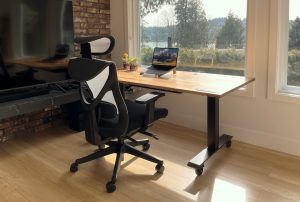Imagine being able to know exactly what’s going on in your workplace—without hovering over anyone’s shoulder like a helicopter manager. That’s the magic of employee tracker systems! These smart tools help companies boost productivity, keep everyone on the same page, and promote fairness. And no, they’re not as scary as they sound. Let’s break it all down.
What is an Employee Tracker System?
An employee tracker system is like a digital assistant. It helps managers see how work is getting done. These systems can monitor things like:
- Work hours
- Task progress
- Break times
- App or website usage
- Project deadlines
The idea isn’t to control employees—it’s to understand how work flows, so improvements can be made. In fact, many workers appreciate the clarity these systems bring!
Why Do U.S. Workplaces Use Tracker Systems?
In the United States, efficiency is often the name of the game. Whether you’re working from an office in Chicago or remotely from a cabin in Colorado, tracker systems help make sure no hours go uncounted and no efforts go unnoticed.
Here’s why companies are loving employee trackers:
- Remote Work Support – With more people working from home, managers want to keep teams connected.
- Fair Performance Reviews – Everyone’s contributions can be seen clearly and documented.
- Time Optimization – Stop guessing where time goes—start seeing it.
- Boosting Accountability – Deadlines become easier to track and meet.
- Transparency – Everything is out in the open, reducing workplace conflicts.
Types of Employee Tracker Systems
Not all trackers are created equal. There are several styles, depending on what info a company wants to track. Here are the most popular:
1. Time Tracking Tools
These are perfect for logging work hours. Think of tools like:
- Clockify
- Time Doctor
- Toggl Track
Employees just press a button to start and stop their timers. It’s great for billing clients or managing part-time schedules.
2. Activity Monitoring Tools
These check what apps or websites are being used during work hours. Tools like:
- Hubstaff
- Teramind
- ActivTrak
Why does this matter? Because it helps spot distractions like too much time on social media—or shows where processes slow down. Information like this helps teams improve workflow.
3. Project Management Trackers
These give a live look at how projects are moving along. Some favorites include:
- Asana
- Monday.com
- Trello
Colorful boards, checklists, and status updates make work feel more like a game—and less like a guessing match.
Benefits of Using Employee Tracker Systems
If used right, employee trackers are a win-win for everyone. Check out these top benefits:
- Increases Productivity – Everyone knows what’s expected and when it’s due.
- Encourages Fair Play – No more guessing who’s doing the heavy lifting.
- Reduces Micromanagement – Managers can finally relax and trust the data.
- Improves Communication – Stats and reports help cut the back-and-forth emails.
- Motivates Teams – Many systems include rewards, badges, and charts to make productivity visual and fun.
Concerns and Misunderstandings
Okay, let’s be real—some employees feel nervous about these tools. It’s easy to picture a Big Brother situation. But when done right, tracking should feel more like a helpful guide, not a digital spy.
Here are ways companies can keep it cool and ethical:
- Be Transparent – Let everyone know what’s being tracked and why.
- Give Access – Employees should see their own data too. It builds trust.
- Respect Privacy – No sneaky surveillance! Personal time should stay private.
Honest conversations go a long way in making tracker systems work for everyone.
Staying Legal in the U.S.
In the United States, employee tracking is mostly legal—as long as it’s done on company devices and time. But different states might have their own rules. For example:
- California – Requires clear consent and notice before tracking.
- New York – Businesses must tell employees if they monitor emails or internet use.
- Illinois – Strong privacy laws make biometric tracking very limited.
The key? When in doubt, ask HR or a lawyer. It’s always better to be safe (and respectful) than sorry.
Tips for Making Tracker Systems Work
If you’re planning to use a tracker at work—or if you’re an employee hearing about one—here’s how to get the most out of it:
1. Set Clear Goals
Define what you want the tracker to do. Is it to measure time? Track projects? Reduce wasted hours?
2. Talk About It
Open communication helps reduce fear and encourages buy-in from your team.
3. Start Small
Try a feature or two first. Then add more as everyone gets comfortable with it.
4. Choose the Right Tool
Some tools are better for small teams; others are perfect for large corporations. Do your homework!
5. Review and Adjust
Check the data, get feedback from your crew, and tweak as needed. Tracking is a tool—not a test.

Success Stories
Let’s look at a few examples of how these systems have been game-changers:
- Startups – A small 5-person tech startup in Austin used Time Doctor to track billable hours, growing profits by 25% by simply eliminating wasted time.
- Remote Teams – A digital marketing agency with remote workers across 3 states used Hubstaff to boost collaboration. Projects finished 30% faster.
- Large Corporation – A Chicago-based law firm used Toggl to fairly divide tasks between associates. It reduced burnout and improved job satisfaction.
Pretty impressive, right?
The Future of Tracking
Employee tracking is getting smarter every year. With AI and machine learning jumping in, future tracker systems might:
- Suggest smarter break times
- Automatically update task progress
- Help match workers to projects they enjoy most
The goal? To make work smoother, not tougher.
Final Thoughts
Employee tracker systems don’t have to be scary. When used with care and communication, they build trust, efficiency, and transparency. Whether you’re a manager trying to boost output or an employee wanting recognition for your daily hustle, tracking tools offer a clearer picture for all.
So go ahead, explore your options. Create better habits. Celebrate the wins. And make the workplace smarter—one click at a time!






